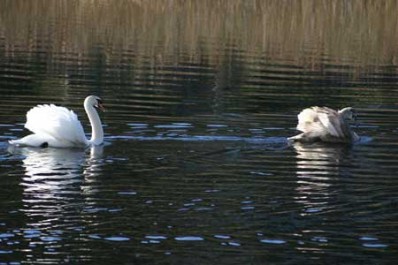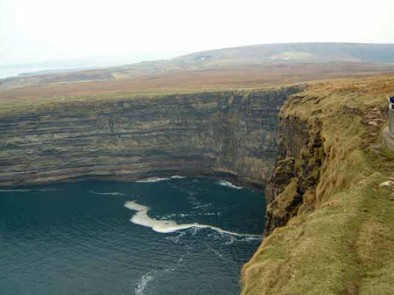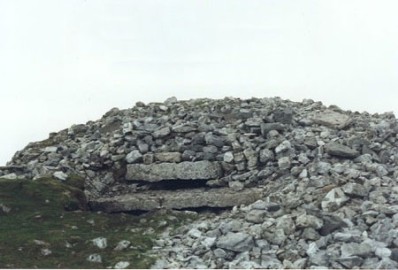Red River Lodge Bed and Breakfast Accomodation Ballina County Mayo, B&B Ballina Ireland, B&B
Main menu:
Historical Sites
Activities
Historical Sites
- The Museum of Country Life
The Museum of Country Life is part of the National Museum of Ireland. This modern museum is located in the grounds of Turlough Park, ancestral home of the Fitzgeralds and close to Turlough round tower and abbey. The Museum offers the visitor a fascinating insight into rural life in Ireland over the 100-year period from 1850-1950.
Visit this site for more details of this and other Museums in Mayo
- Yeats Country/W.B. Yeats
The landscape and folklore of his native County Sligo had a huge influence on the writings of this great prolific Irish Poet, W.B. Yeats. We feature many of the places highlighted in his poetry in our guides, such as Dooney Rock ( 'The Fiddler of Dooney') or Slish Wood ('The Stolen Child'). Follow in his footsteps and see for yourself why these picturesque landscapes captured his imagination. W.B. Yeats final resting place is at Drumcliffe in the North of the county. His epitaph - inscribed on his gravestone - is from the poem, Under Ben Bulben:
"Cast a cold eye on life, on death; horseman, pass by!"







- Ceide Fields
Beneath the wild boglands of North Mayo lies Ceide Fields, the most extensive stone age monument in the world; field systems, dwelling areas and megalithic tombs of 5,000 years ago. In addition, the wild flora of the bog is of international importance and is bounded by some of the most spectacular rock formations and cliffs in Ireland.
More details here: http://www.museumsofmayo.com/ceide.htm
- Carrowmore
Carrowmore Megalithic Cemetery, approx. 4840 B.C. This Dolmen Cairn area is the largest in Ireland but is among the oldest and most significant in Europe along with Carnac in France. This is the largest cemetery of megalithic tombs in Ireland and is also among the country’s oldest. Over 60 tombs have been located by archaeologists – the oldest pre-date Newgrange by some 700 years. A restored cottage houses a small exhibition relating to the site.
Restricted access in centre for people with disabilities (Tombs are inaccessible to people with disabilities).
More information here: http://www.heritageireland.ie
- Rosserk Abbey
Rosserk Abbey is situated approximately 6.5 kilometres from Ballina. It was founded in 1400 by a Norman called Joyce. It is a well preserved Franciscan Abbey with a finely carved west doorway leading to a single aisle church, with a graceful east window. Other carvings include two angels and the instruments of passion. There is another fine window on the south wall of the chapel.

- Cairns of Carrowkeel
There are approximately 14 cairns (passage tombs) at Carrowkeel. The roofs are dry stone corbelled and fully intact. The English author Michael Poynder has written a fascinating book about the cairns called “PI in the Sky”.
- Foxford Woollen Mills
These famous mills were built in 1892 by Mother Agnes Morrogh-Bernard. Agnes, who came from a wealthy family, was appalled by the terrible poverty of the region and built the mills to provide skills and a source of income for the local men. Foxford rugs and blankets were renowned the world over for their quality and as a brand name on a par with Waterford Crystal. There is an excellent craft shop in the mills and you can pick up great bargains in tweed and woollen goods. Since opening in 1992 The Foxford Woollen Mills Visitor Centre is recognised as one of the leading attractions in Ireland. At the core of this unique facility is the tour of the Working Woollen Mills which allows the visitor to experience the fascinating success of the Foxford Woollen Mills.
More details here: http://www.museumsofmayo.com/foxford.htm
- Moyne Abbey
Moyne Abbey is situated at the mouth of the River Moy overlooking Bartra Island. It is 3.5 kilometres from Killala Town. It was founded by permission of Pope Nicholas for the Observantine Franciscans in 1460. The Church consists of a rectangular nave and chancel with an eastward extension of the nave which is wider than it. The west doorway was added in the 17th century.
There is also a chapel running southwards from the east end of the church. The stairs of the tower are still intact. The well preserved cloisters were added towards the end of the 15th century. The various buildings surrounding it include a sacristy next to the church with a chapter house beside it, and on the side opposite the church there is a kitchen and refectory, under which a stream flows. The friars remained long after the Dissolution. Sir Richard Bingham burned the friary in 1590.
- Rathfran Friary
In north east of Killala, cross bridge over Palmerstown River and turn right. The friary was founded in 1274 by Sir Richard de Exeter for the Dominicans.
It was burned by Sir Richard Bingham in 1590, but the friars remained in the area until the eighteenth century.